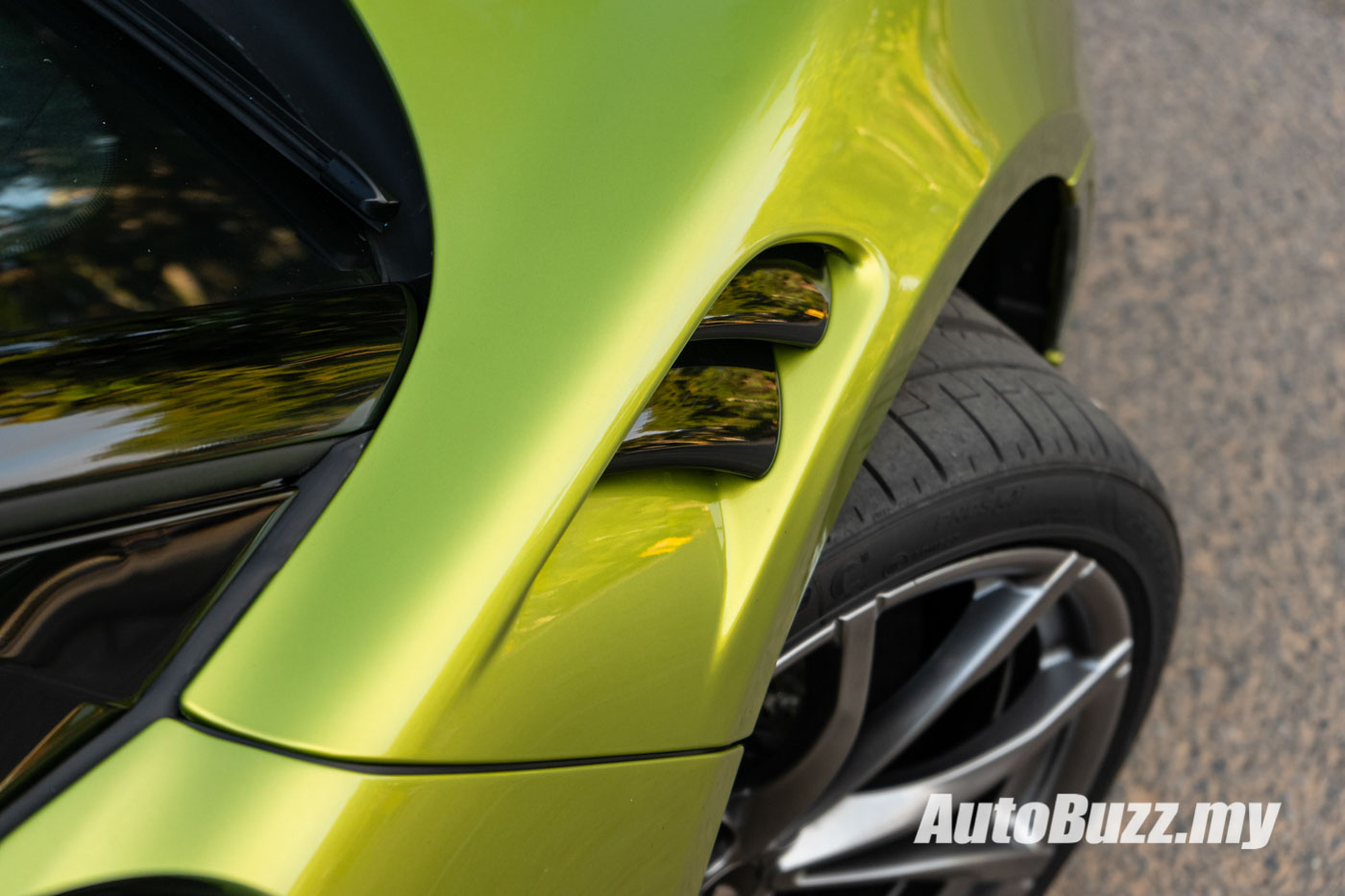The McLaren Artura is, for all intents and purposes, a new beginning for the Woking-based supercar manufacturer. It’s a sequel to the hugely successful decade that kicked off with the 12C, except the focus this time is on electrification.

Under the guise of its carbon-aluminium shell, the said objective isn’t immediately apparent. The Artura is still distinctly a McLaren, albeit sitting on the brand new McLaren Carbon Lightweight Architecture, and more sophisticatedly produced.

You see, its exterior shell comprises just eight ultra-lightweight panels. There are no shutlines for where the A-pillar meets the roof, and the entire aluminium rear deck is hot-formed (a patented tech) to shape.

There is no active aero here, but there’s ample evidence of clever engineering with the way cool air is routed through the nose and into the engine bay. The titanium-coated engine cover and rear bumper are perforated to evacuate hot air, though the former features a chimney to expedite the cooling of the engine.

Speaking of which, new here is the M630 3.0 litre twin-turbo V6 engine. It’s developed in-house and arrives in a smaller, lighter package compared to the V8 lump, but still offers a throaty, bassy sound signature. The turbos sit within the 120-degree V, and together with a lightweight axial flux electric motor generates a total system output of 680 PS and 720 Nm of torque.

When you’re daily driving, the car behaves just like a regular plug-in hybrid, which means you don’t get the full whack when the battery is depleted. But in Track Mode, battery levels will not drop below 97% state-of-charge (the engine actively charges the battery at a rate of up to 360 kW), ensuring sustained performance and peak propulsion. Handy for track days.

Also new here is the eight-speed dual-clutch transmission, replacing the 7DCT of yore. There’s no reverse gear here (the e-motor that’s built into the transmission bellhousing is solely responsible for this), so the box is 40 mm shorter despite having an extra cog.

Shift patterns lean on the aggressive side for the most part, but the e-motor alleviates shift shock with instant torque infills – something that’s even more of a prominence on the race track. Launch control is standard, so you’ll rocket to 100 km/h from standstill in just 3.0 seconds, before maxing out at an electronically limited top speed of 330 km/h.

Other key aspects that make this PHEV supercar a true McLaren are driving position, hydraulic steering wheel and a conventional hydraulic braking system. Regenerative brakes are omitted in favour of pedal feel, so it’s clear the primary role of the electric motor is to boost performance by plugging turbo lag.

But as mentioned earlier, it can behave like a regular PHEV. A 7.4 kWh lithium-ion battery pack provides up to 31 km of range on a full charge, and juicing up the battery (via a Type 2 port on the left; 3.6 kW AC charging max) takes just under three hours.

The Artura starts off in pure electric mode all the time, and the adaptive dampers afford a decidedly wide rebound rate for supple daily driving, or a firmer setup for backroad bombing. Thankfully, the staggered wheels (19-inch front, 20-inch at the back) are not oversized, but they do come with Pirelli’s new cyber tyres with built-in chips that provide real-time pressure and temperature readouts.

Interior appointments, while rather minimalistic still, are well-hewn with swathes of luxurious materials. An eight-inch infotainment display (with Apple CarPlay and Android Auto) and 10-inch digital instrumentation are standard, the former replete with an integrated SIM card for continual wireless over-the-air updates.



In Malaysia, the standard specification for the Artura already includes the Technology Pack, bringing with it the high-fidelity 12-speaker Bowers & Wilkins sound system, full adaptive LED headlights with high beam assist, as well as advanced driving aids like adaptive cruise control (with full braking function), road sign recognition, 360-degree surround view camera system, and lane departure warning.

Further personalisations can be made through McLaren Special Operations, but that also means you’ll have to tack on a few more months to the wait list.
The Artura, hybrid it may be, promises uncompromising driver engagement despite being saddled with a laundry list of features, many of which are new to the brand. It may not excite the existing V8 customer base quite as much, but for roughly the price of a 911, perhaps many will find themselves wanting the Artura more. Wouldn’t you want more flash for your cash?





